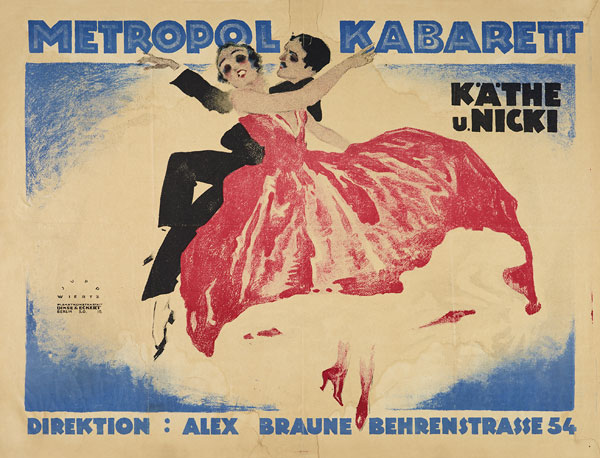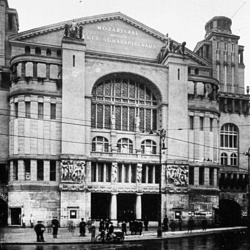

Metropol
Construction started in 1905 on the new centre-piece of western Berlin’s Nollendorfplatz, the Neues Schauspielhaus.
The huge theatre and concert hall, designed by architects Boswau & Knauer, opened in 1906 with a production of Shakespeare’s The Tempest in the 1260-seat theatre. By 1911, the Mozartsaale concert hall had been converted into a cinema, seating 1364.

(image: Architekturforum.net)
From the beginning of the First World War, the venue staged mostly operettas, but from 1914 to 1923 was run as the Theater am Nollendorfplatz under the leadership of author and theatre director Herman Haller. In 1927, the venue was taken over by the director Erwin Piscator for his Piscator-Bühne stage company. Piscator created ground-breaking time-critical performances commissioning writers such as Ernst Toller, Walter Mehring, George Grosz and Bertolt Brecht.

In 1928, the cinema was redesigned by Georg Leschnitzer and the seating capacity reduced to around 900. It was here on December 6th 1930 that the German premiere of the American anti-war film All Quiet On The Western Front took place. Despite having been cleared by the censors, the Nazi party, and in particular Goebbels, took a dislike to the film’s portrayal of weariness and defeatism among the soldiers of the Great War.
“Goebbels sent bands of Storm Troopers to the theatre to threaten and harass anyone who wanted to see the movie. When that failed to stop the movie, the Nazis invaded the theatre itself and started shouting and booing. They set off stink bombs. They even brought cartons of white mice and released them under the seats.”
Otto Friedrich – Before The Deluge
The protests at Nollendorfplatz lasted three days. Eventually the Board Of Film Review reversed its decision and the film was banned from further showings.
After Erwin Piscator fled Germany in 1931, and for the duration of the Nazi regime, the theatre once again became a home to light opera under the direction of actor Harald Paulsen.
The main auditorium was destroyed during the Second World War, but the facade and the cinema remained intact.
In 1951 the venue was renamed The Metropol and throughout the 50s, 60s and 70s was known mainly as a live music venue and in the 1980s as a discotheque. A host of well-known names played the Metropol over the years including Depeche Mode, The Human League, Joe Cocker, Eurythmics, The Jam and a very youthful U2.


For a short time in 2000, the venue became the home of Berlin’s legendary, boundary-pushing nightclub The KitKat Club.
In 2005 the interior of the venue was remodeled by the architect Hans Kollhoff, at a cost of 11 million euros, into Goya. It was used for one-off club nights and private hires and had an exclusive restaurant on the first floor called The Elephant Food Club.

In 2019 the building was once again renamed to Metropol, with a focus on live music.
